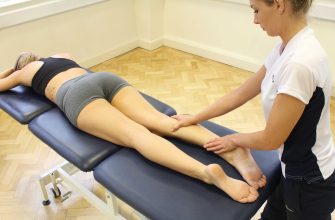Medical massage is not a single technique but rather an outcome-based, physician-prescribed treatment. Its primary goal is to achieve specific, measurable results in the treatment of a diagnosed medical condition.
Unlike relaxation massage, which focuses on general well-being and stress reduction, medical massage is a clinical therapy. It is:
- Prescription-Based: Typically prescribed by a doctor, chiropractor, or physical therapist.
- Goal-Oriented: Each session is designed to address a specific issue, such as increasing range of motion, reducing inflammation, or alleviating neuropathic pain.
- Data-Driven: The therapist often performs assessments (like posture analysis or range-of-motion tests) before and after treatment to measure progress.
It involves the application of specific therapeutic techniques targeting the muscles, fascia, tendons, ligaments, and connective tissues that are directly related to the patient’s diagnosis.
Who is it Suitable For? (Common Conditions)
Medical massage is suitable for a wide range of individuals suffering from acute or chronic musculoskeletal and neuromuscular conditions. It is commonly prescribed for:
- Musculoskeletal Pain: Chronic back pain, neck pain, shoulder pain, and sciatica.
- Injuries: Whiplash, sports injuries, rotator cuff tears, and tendonitis.
- Repetitive Strain Injuries (RSIs): Carpal tunnel syndrome, tennis elbow, and golfer’s elbow.
- Headaches: Chronic tension-type headaches and migraines caused by muscle tension.
- Post-Surgical Rehabilitation: To reduce scar tissue formation (adhesions), improve circulation, and decrease swelling after procedures.
- Postural Dysfunctions: Conditions like “tech neck” (forward head posture) and upper cross syndrome.
- Neurological Conditions: To manage spasticity and improve function in conditions like Parkinson’s disease or after a stroke (as part of a broader therapeutic plan).
- Fibromyalgia and Myofascial Pain Syndrome: To relieve trigger points and widespread pain.
Who is it Prescribed To?
Medical massage is prescribed to patients who have a specific, diagnosed condition that would benefit from targeted soft tissue manipulation.
- The Prescriber: It is typically prescribed by a licensed medical professional, most commonly:
- Medical Doctors (MDs) and Doctors of Osteopathic Medicine (DOs)
- Chiropractors (DCs)
- Physical Therapists (PTs)
- The Practitioner: The massage is performed by a Licensed Massage Therapist (LMT) or a Certified Massage Therapist (CMT) who has advanced training in orthopedic assessment, pathophysiology, and specific clinical techniques.
The prescription will often include the diagnosis, the goals of treatment (e.g., “reduce muscle spasm in the upper trapezius”), the frequency of sessions, and the expected duration of care.
What are the Contraindications?
Contraindications are conditions or circumstances where a treatment could be harmful. For medical massage, they are divided into two categories:
1. Absolute Contraindications (Massage should NOT be performed):
- Deep Vein Thrombosis (DVT) or Blood Clots: Massage could dislodge the clot, causing a life-threatening pulmonary embolism.
- Contagious Skin Diseases: Such as impetigo, ringworm, or undiagnosed rashes.
- Fever or Systemic Infection: The body is under stress, and massage can overtax the system.
- Acute Fracture or Unhealed Wound: Direct pressure can disrupt the healing process.
- Severe Osteoporosis: The risk of fracture from pressure is too high.
- Cancer with Bone Metastases (unless approved by an oncologist): Pressure could lead to fractures or spread.
- Uncontrolled High Blood Pressure.
- Recent Hemorrhage or Bleeding Disorder: Massage can increase the risk of bruising or internal bleeding.
2. Local/Relative Contraindications (Massage can be performed, but the affected area must be avoided or techniques must be modified):
- Varicose Veins: Deep pressure directly on the veins should be avoided.
- Localized Inflammation or Swelling: The area itself should not be massaged directly, but work around it can improve circulation.
- Pregnancy: Requires a therapist trained in prenatal massage, with specific positioning and techniques, especially during the first trimester.
- Osteoporosis: Light pressure only.
- Cancer (in remission or under treatment): Requires physician clearance and a therapist trained in oncology massage, using very light pressure and avoiding areas near tumors or radiation sites.
- Bruises, Cuts, or Abrasions: The area itself should be avoided.
- Pacemaker: Deep work around the chest and shoulder should be avoided.
What is the Effect of It?
The effects of medical massage are physiological and targeted. They include:
- Pain Relief:
- Gate Control Theory: The pressure signals from massage can “close the gate” in the spinal cord, blocking pain signals from reaching the brain.
- Breaking the Pain-Spasm Cycle: Massage interrupts the cycle where pain causes muscle guarding/spasm, which in turn causes more pain.
- Improved Circulation and Reduced Inflammation:
- The mechanical pressure helps move fresh, oxygenated blood into the tissues and pushes metabolic waste (like lactic acid) and inflammatory chemicals out via the lymphatic system.
- Release of Fascial Restrictions and Scar Tissue:
- Medical massage techniques (like myofascial release and deep tissue friction) can break down adhesions and restrictive collagen fibers in the fascia, restoring normal tissue mobility and reducing pain.
- Improved Range of Motion and Flexibility:
- By reducing muscle tension and breaking up adhesions, joints can move more freely, and muscles can lengthen properly.
- Reduction of Neurological Symptoms:
- By relieving pressure on nerves caused by tight muscles (e.g., in piriformis syndrome or carpal tunnel), it can reduce symptoms like numbness, tingling, and radiating pain.
- Faster Recovery from Injury/Surgery:
- By managing swelling, reducing scar tissue formation, and maintaining tissue pliability, medical massage can significantly accelerate the healing process.
In summary, medical massage is a powerful, evidence-based component of modern healthcare, moving far beyond simple relaxation to become a legitimate therapeutic intervention for specific medical conditions.







